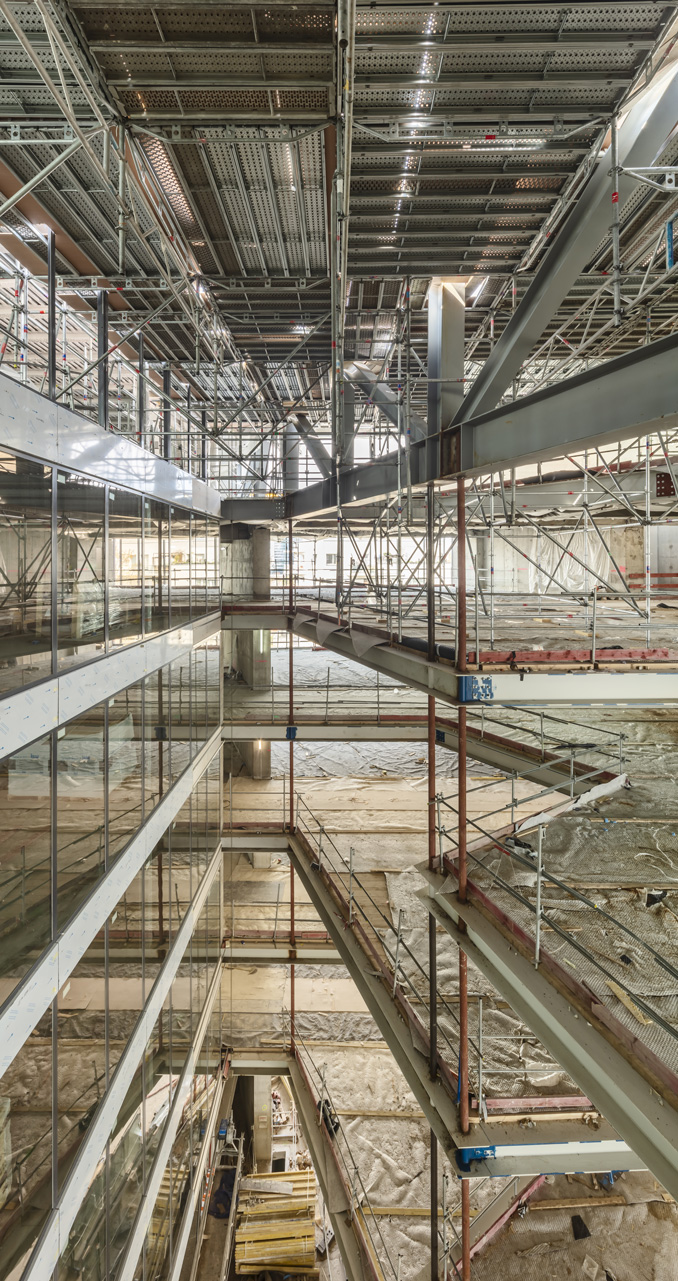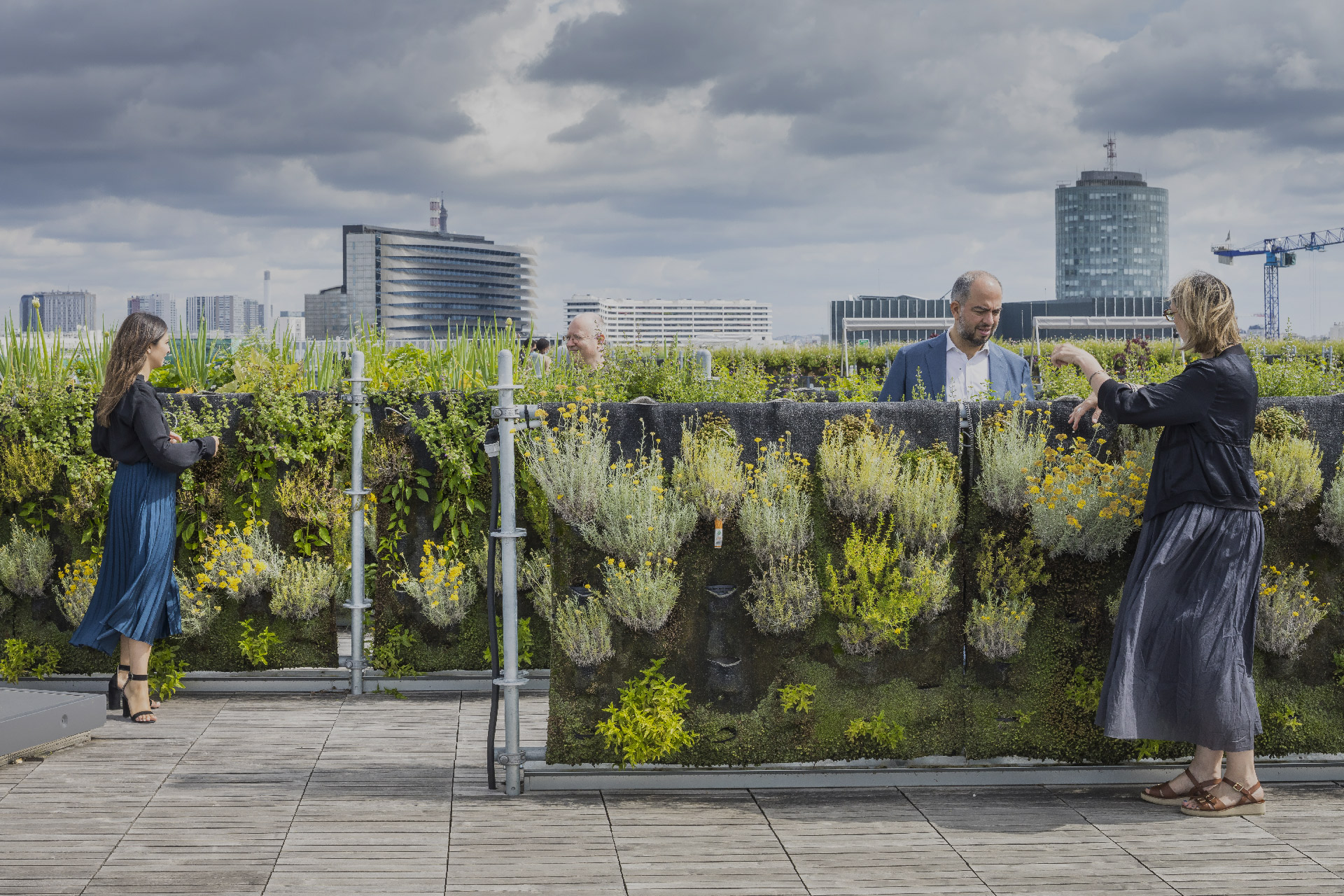
They are responsible for the site’s compliance with the plans, materials and regulatory implementations.
Very present throughout the construction work, the construction manager coordinates meetings and site visits in order to accompany the contracting authority and the contractors. The construction manager checks for possible non-conformities, in order to notify the contractor so that they are rectified.
They review the subcontracting files proposed by the constructor and ensure the rigorous financial monitoring of the project. Essential for the successful implementation of the project, the role of construction management is to validate the progress and situations of the construction work.

The architect and the construction site throughout history
From design to execution, the architect’s role is now highly regulated. However, this has not always been the case. Going back several thousand years, in the time of the pharaohs, it was the great officials who were responsible for directing the technical execution of the building sites. These managers combined the roles of architect and contractor. Some, at the head of colossal building sites, attained the status of great dignitaries of the kingdom.
Then, at the time of the Roman Empire, architectural training became organised. It was not far removed from the current reality: it included all the training necessary to carry out all the tasks of a project manager. These studies are particularly rigorous and cover many fields. Project managers are not only trained to develop the technical blueprints of buildings and to supervise construction sites, they are also introduced to geometry, engineering and financial management. The representation of their projects is expressed through drawings which include perspective and lighting effects.
At the end of their studies, architects are familiar with the complexity of the projects and ready to discover real life, in all its aspects, from the sketch to the delivery.
“A good contractor must first of all be a good architect.”

The construction site: the magical place where the creative act takes shape.
Enclosed and secure, the construction site has an intrinsic power of attraction and captures the gaze. When set up in the heart of the city, the construction site triggers the curiosity of passers-by. One cannot help but wonder, “what are they building here?” Hidden behind the barriers, construction sites keep some of their secrets for months or even years. Then the works comes to an end, the curtain falls and opens. The work is unveiled.
On the other side, everybody remembers their first step in a construction site. After passing the turnstile, we immediately notice the energy gathered in the same space: the noise, the bustle, the smell of poured concrete and the crane operating like a construction surgeon. Fascination mingles with apprehension.

The architect is present day after day within this mysterious perimeter. He plays the fundamental role of coordinator and interlocutor between the various stakeholders to ensure the progress of the work. His tasks are numerous: he suggests, checks, decides and guarantees the match between the drawing and the construction.
The construction site is not simply “technical” for some, or “architectural” for others. It’s a very different but complementary set of disciplines. Whether we like it or not, collaboration is guaranteed throughout the process in order to complete the project.
In this inexorable flow of exchanges, the architect plays the role of diplomat throughout the birth of the building. He must demonstrate a capacity for synthesis to understand the problems of each stakeholder in order to solve them while preserving an architectural sensitivity.
Protected by the Ordre des Architectes and advised by the MAF in the event of complex situations, the architect faces many responsibilities.

The Architect-Contractor at Arte Charpentier
Arte Charpentier brings together 4 disciplines: architecture, interior architecture, urban planning and landscaping. Contracting emerges as a fifth. Combining the Architect’s presence in both the design and the construction phases ensures the integrity of the work in its details. At Arte Charpentier, we rely heavily on our expertise and experience on large and complex projects in order to anchor construction management in all of the projects we design.
To do this, we use multiple tools which comply with ISO 9001 and 14001 standards and the quality charter, in order to ensure an identical follow-up on all projects that are carried out by the agency.
“Creativity, Rigour, Monitoring, Technical analytical skills and Architectural sensitivity are the keys to carrying out a project according to best practices.”
Our thanks to Jean-Frédérick Loko for the illustrations in the article.
Discover his work here!

-

Michela Donato Architecte, Associée

FORMATION
Architecte H.M.O.N.P. – École Nationale Supérieure d’Architecture de Lyon (2015)
Diplôme d’architecte – École Nationale Supérieure d’Architecture de Lyon (2014)
Master 1 en mobilité Erasmus – École Nationale Supérieure d’Architecture de Lyon (2013)
Licence d’architecture – Université d’Architecture de Gênes, Italie (2011)












